For those not lucky enough to live in a climate conducive to citrus, there is a way to grow fresh lemons and oranges. But you're gonna have to get creative.
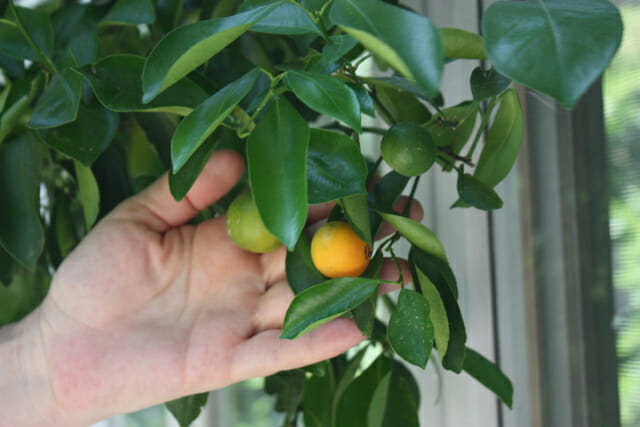
We’re happy for you, California and Florida. Really we are. But many of us live in harsher climates, where a citrus tree would freeze to death before Thanksgiving. If we want homegrown key limes, it’s going to have to happen indoors.
Growing citrus inside is nothing new. Wealthy European estates as far back as the 17th century had orangeries, greenhouses used for overwintering citrus trees and other delicate plants. But you don’t need a fancy solarium or any special equipment to produce a respectable crop of citrus – just a sunny window and a little patience.
[mf_h2 align=”left” transform=”uppercase”]1. Choose the Right Pot[/mf_h2]
A small pot helps keep your tree smaller in case you don’t have 15-foot ceilings. Plus, a light plastic pot will be easier to move around the house and yard, following seasonal light. “You want a pot with good depth,” says Donna Dube, who has been growing citrus trees with her husband in their Massachusetts home for about 15 years. A deep pot helps balance the tree when it gets larger and becomes top-heavy.
[mf_h2 align=”left” transform=”uppercase”]2. Don’t Skimp on the Soil[/mf_h2]
“Citrus trees don’t like wet feet,” Dube says. To allow the soil to dry out, Dube and her husband experimented with mixing sand into standard potting soil. Now they use a special soil mix for cactuses and citrus trees. To help the soil drain well, Dube recommends lining the bottom of the pot with pebbles. If you’re worried about keeping the weight down so you can move the tree easily, it’s possible to substitute Styrofoam packing peanuts for rocks.
Doris Kessler, a landscape architect in Philadelphia, augments her soil in the early spring with a special fertilizer for citrus trees, bought at her local garden supply store.
[mf_h5 align=”left” transform=”uppercase”]3. Location, location, location[/mf_h5]
Kessler has a large collection of citrus trees that spend the winter in an unheated, glass-enclosed porch. Kessler and Dube both bring their trees outside from spring to fall. This year, Dube and her husband built an outdoor shelter to protect the fruit from birds.
The hut is constructed out of PVC pipe, bird netting and zip ties.
[mf_h2 align=”left” transform=”uppercase”]4. Water, water everywhere[/mf_h2]
Dube waters once a week during the winter, when the trees are semi-dormant. For 18-inch pots, she gives half a gallon of water. Trees in smaller pots get less. In the summer, when they’re outside, she waters every day, taking care to wait until late afternoon so the trees aren’t in direct sunlight. In extreme heat, she waters more than once a day.
Curled leaves are a sign that the plant needs more water.
[mf_h5 align=”left” transform=”uppercase”]5. Flowers and fruit[/mf_h5]
Conventional wisdom says indoor trees need help to pollinate their flowers because there are no insects around to do it. Dube sometimes pollinates her trees with a Q-Tip. But sometimes she lets the flowers fall off unpollinated in order to give the tree a rest from bearing fruit.
But Kessler stopped pollinating her trees years ago, and they somehow manage to produce fruit. “There’s no insect pollination going on — unless aphids pollinate,” she jokes.
Kessler’s favorite citrus trees are her Meyer lemons. They usually bloom in March, she takes them outside in May, and the fruit ripens over the summer. In a good year, she gets as many as 15 lemons on each tree, and harvests them during the winter as needed.
Dube’s first citrus tree was a calamondin orange, which produces tiny, sour fruit sometimes used in skin products. Dune squeezes the juice and freezes it, saving up until she has enough to make sorbet. “Each fruit probably gives us about one ounce of juice,” she says. “We have been patient and have a good-sized jug of juice in the freezer.”
Fruit drop is very common in potted trees, but Kessler says that’s not necessarily a bad thing. “They set way more fruit than they can support,” she says.
[mf_h2 align=”left” transform=”uppercase”]6. Common problems and their solutions[/mf_h2]
Kessler keeps an eye out for yellowed leaves, a sign her trees need more iron. She gives them a special chelated iron supplement that she buys at Logee’s Greenhouses in Connecticut, the same place she got most of her trees.
This year she had an aphid infestation while the trees were still indoors. An application of horticultural oil took care of it, but it was a messy, unpleasant task to spray the trees indoors.
“We’ve had some pretty ugly infestations of spider mites,” says Dube. She has also struggled with scale bugs, but the risk of both parasites is reduced by spraying the leaves down with water occasionally, and both can be eradicated with insecticidal soap.
The biggest danger in small-scale citrus growing is that it appears to be addictive. Both Kessler and Dube started about 15 years ago. They both coincidentally started with Calamondin orange trees. Now, listening to them rattle of their list of citrus trees is amusing. Kessler has two Meyer lemons, a key lime, a calamondin orange, a blood orange and several other trees that are mysteries. “The labels fell off,” she explains. “They’re sort of orangey.”
Dube, meanwhile, has branched out into other tropical fruit plants, including a pineapple, a dwarf pomegranate tree and a weeping fig.
You’ve been warned.
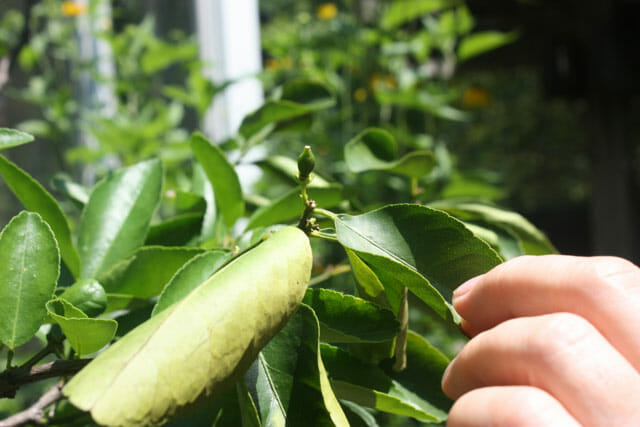
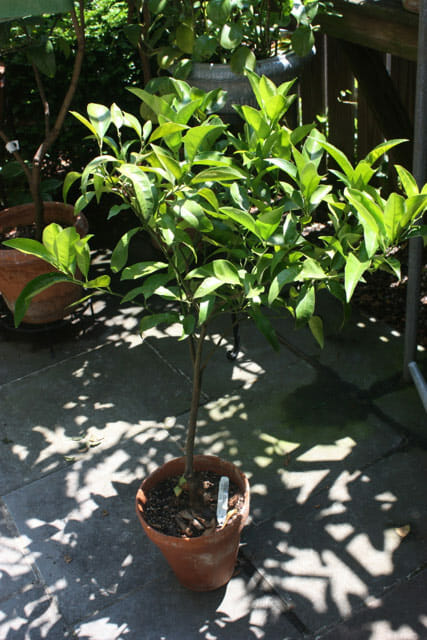
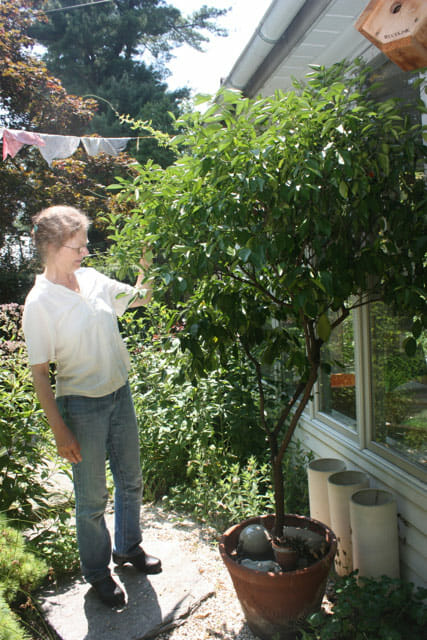
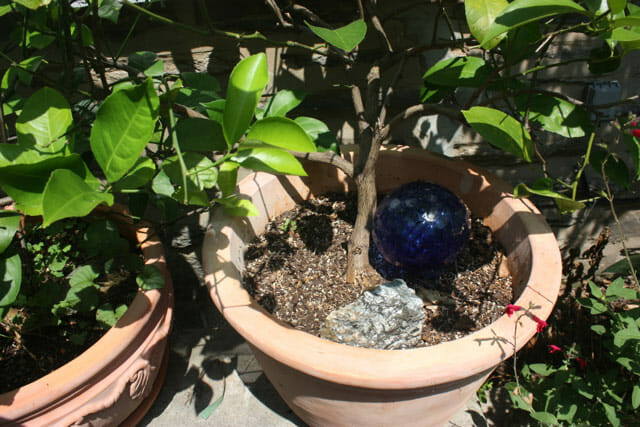
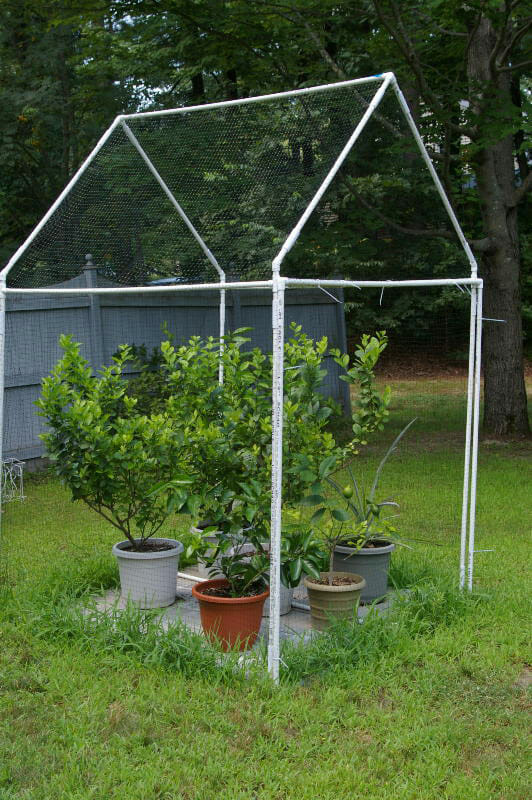
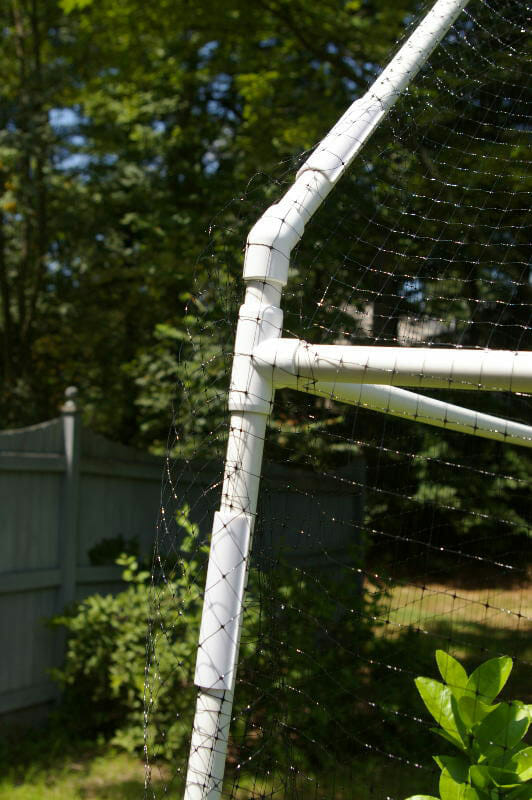
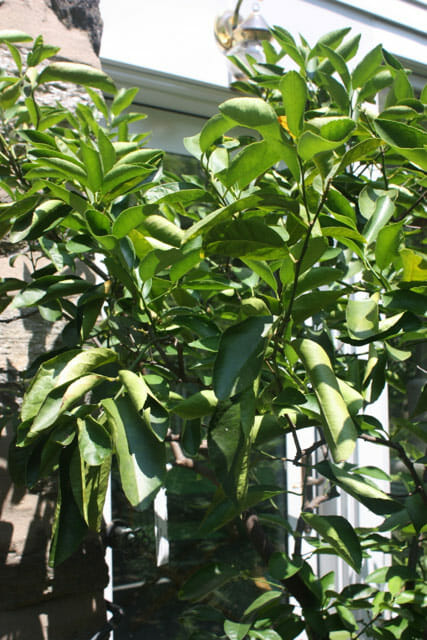
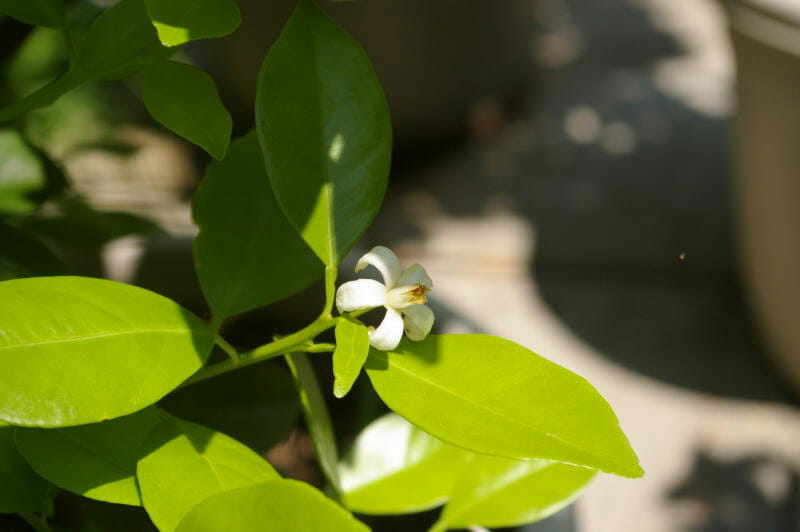
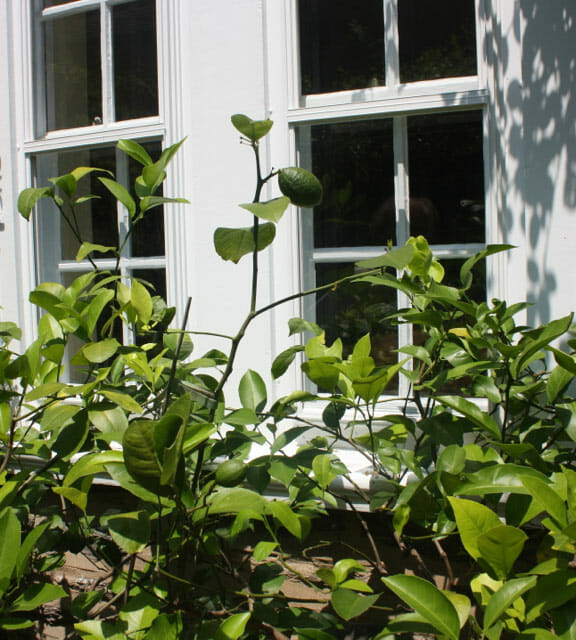
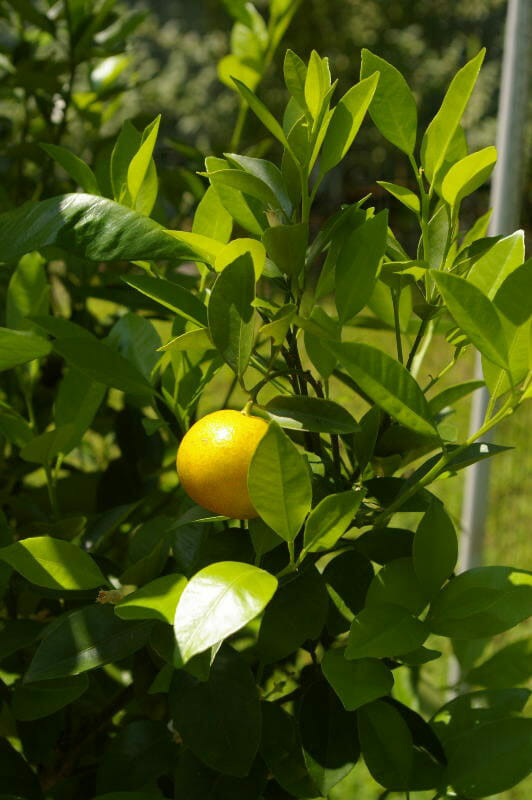
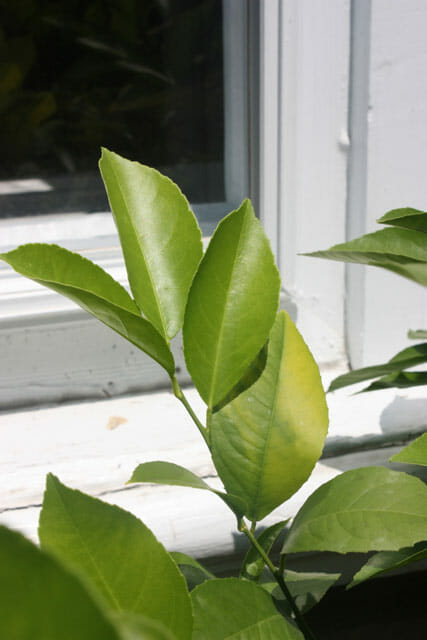
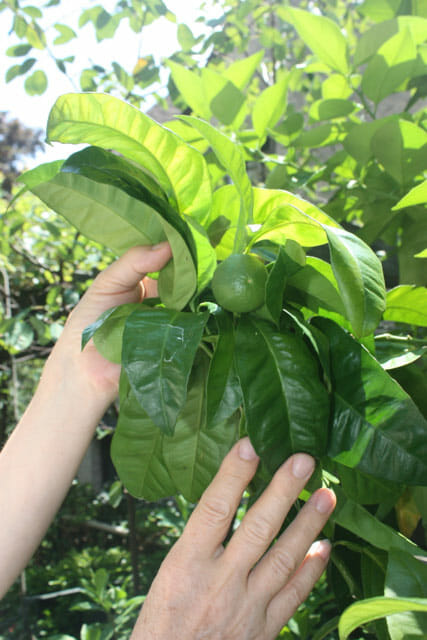
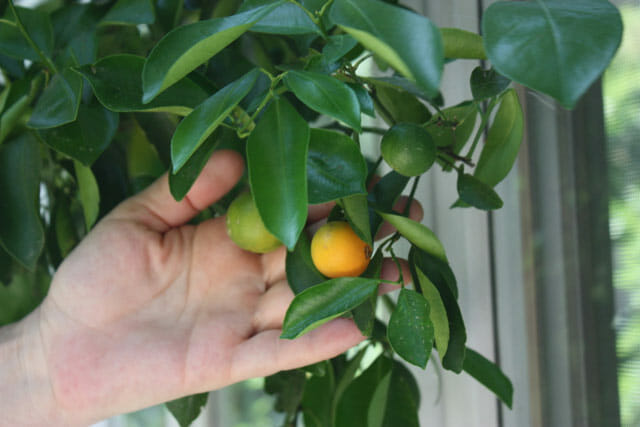
love this about orange and citrus, i am from Cali Colombia South America where orange tree grow any place even in the streets of cities like a ornamental or garden tree, over there u can gel free orange when is season jajajajaj, my father had some tall orange trees the old kind organic u do not see any more we grow up climb trees and eat as much orange until our stomach was bad jajajaj love trees but i live in PA in the mountains, I have one orange tree i get in Florida 7 years ago some times give… Read more »
You have propagated a myth. Putting pebbles in the bottom of a container absolutely does not promote drainage. In fact, just the opposite – it raises the saturation zone of the media above it, thereby keeping less useable roots space, wetter. There are literally hundreds of articles about this online. It can be referred to as “perched water table” or just “do pebbles in a pot help drainage.” Please help do your part to dispel this bit of disinformation. Thank you.
We live in the Pacific Northwest, where we can have cold weather September-April. At what temps do you bring them in and take them out? Would a ‘grow’ lamp help in the winter? Would a wood stove dryness affect it, if its in the same room?
They are hard to find, but a pineapple orange tree is my favorite potted citrus tree. I have to say it is the tastiest orange variety I have ever had. I found mine at a military exchange store, they only had one, and it looked like the Charlie Brown Christmas tree, but I brought it home. It produced over 20 oranges this year, which made it top heavy. I wish I had 10 of them!
My two year old orange tree stays on the deck during the summer months. It bloomed last summer and set a multitude of oranges. They grew to the size of walnuts. I brought it inside this winter where the oranges turned color. They are pretty, but very sour. Now the tree seems to be dying. What can I do for it?
Hello. I live in a small upstairs apartment that was designed to be energy efficient… it has no outdoor space, and the windows are angled to get little direct sunlight to save on heating and cooling. Also, I cannot keep plants outside because the kids in my complex DESTROY everything that doesn’t belong to them. They even RIP whole branches off of the young cherry trees our manager planted for the public spaces. I’ve determined my dining room gets the best light and I’ve successfully kept small plants alive. I just bought a meyer lemon and a serrano pepper. I… Read more »
Hi I’ve had a blood orange tree for years in a pot, it had a lot of oranges first year but has not grown any since. I also seem to see a sticky substance on the branches. I’ve trimmed it down now it’s growing branches and new leaves but no blood oranges and again I’m noticing sticky substance on branches again Please help thank you
Hi sticky substance on the branches of my blood orange plant. It only had oranges first year nothing since it’s about 7 yrs old. Please help.
Hello, I got my citrus tree from my sister and I LOVe it! It’s big and full beautiful! , I live in Chicago so I take the tree outside in April and back inside around September. My question is why is my tree not producing fruit? I haven’t seen a flower yet. Any advise?